Hiking
-
 In addition to walking you need to be prepared for whatever the weather conditions are when you go for a hike, and you need to be able to find your way back home again.One of the best ways to get started is to start with short hikes first. That way if your muscles or your feet aren't used to hiking or if you find you are not properly dressed for the weather you won't suffer unnecessarily.One of differences between hiking and walking around in town is that you need to become more aware of your circumstances and what you need in order to take care of your body. While you are hiking there generally won't be a car, bus, house, store, or any other shelter to duck into if you get too hot or too cold or too tired or too hungry. And depending on when and where you go there may not be anyone else around. If you miss judge something on a short hike, it won't take long before you can get back to warmth, shelter, food, water, and more familiar surroundings. If you want to do it the easy way, use short hikes to learn what you can expect before attempting to tackle longer hikes.Learn about hiking by doing it at the time of year when the weather is the nicest. Remember you're going to be outside. Later after you have gained some experience and want more variety or challenge you can go out when the seasons are less friendly. Start out by hiking with others in a group. It is also a good idea at least at first to go with other people who have already been hiking and know what to expect and can help you out when you don't know what to do.One of the most common mistakes made by the hiking novice is the wrong choice of footwear. Choosing the right footwear is very important. You should choose footwear that is designed to make your feet comfortable while walking not footwear whose sole purpose is to look good and get attention. The footwear needs to be comfortable and needs to have the kind of sole that won't have you slipping on any surfaces that aren't perfectly flat. Another common mistake is to buy brand new footwear and wear it for the first time on a hike. This is more of a problem with boots than it is with shoes. Give your feet a chance to get used to any new hiking footwear by wearing it for short periods around your home or for short walks in the park. Blisters are the most common result, and while not life threatening blisters certainly aren't fun. They can in fact be quite painful.
In addition to walking you need to be prepared for whatever the weather conditions are when you go for a hike, and you need to be able to find your way back home again.One of the best ways to get started is to start with short hikes first. That way if your muscles or your feet aren't used to hiking or if you find you are not properly dressed for the weather you won't suffer unnecessarily.One of differences between hiking and walking around in town is that you need to become more aware of your circumstances and what you need in order to take care of your body. While you are hiking there generally won't be a car, bus, house, store, or any other shelter to duck into if you get too hot or too cold or too tired or too hungry. And depending on when and where you go there may not be anyone else around. If you miss judge something on a short hike, it won't take long before you can get back to warmth, shelter, food, water, and more familiar surroundings. If you want to do it the easy way, use short hikes to learn what you can expect before attempting to tackle longer hikes.Learn about hiking by doing it at the time of year when the weather is the nicest. Remember you're going to be outside. Later after you have gained some experience and want more variety or challenge you can go out when the seasons are less friendly. Start out by hiking with others in a group. It is also a good idea at least at first to go with other people who have already been hiking and know what to expect and can help you out when you don't know what to do.One of the most common mistakes made by the hiking novice is the wrong choice of footwear. Choosing the right footwear is very important. You should choose footwear that is designed to make your feet comfortable while walking not footwear whose sole purpose is to look good and get attention. The footwear needs to be comfortable and needs to have the kind of sole that won't have you slipping on any surfaces that aren't perfectly flat. Another common mistake is to buy brand new footwear and wear it for the first time on a hike. This is more of a problem with boots than it is with shoes. Give your feet a chance to get used to any new hiking footwear by wearing it for short periods around your home or for short walks in the park. Blisters are the most common result, and while not life threatening blisters certainly aren't fun. They can in fact be quite painful.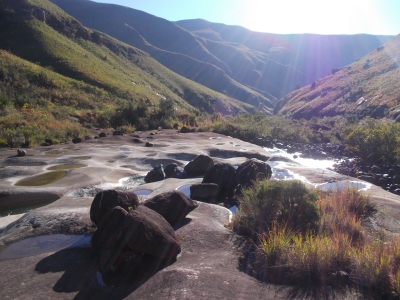 The clothes you wear are also important for comfortable hiking. Your clothing should also be chosen to help your body maintain a comfortable temperature while hiking - not too hot and not too cold.Experience will be your best teacher. To gain experience start out with some short, easy, group hikes. Ask questions when something doesn't feel right or you don't know what to do. The experience you gain will help you make sense out of what others have to say, and pretty soon you will be able to decide for yourself what feels most comfortable to you while you are out walking in the wilderness.Find out what works best for you. Hiking is a very personal experience. What works best for you, what brings you the most joy while hiking, won't be the same for everyone else. Don't worry about it. Get the most out your hiking that you can.
The clothes you wear are also important for comfortable hiking. Your clothing should also be chosen to help your body maintain a comfortable temperature while hiking - not too hot and not too cold.Experience will be your best teacher. To gain experience start out with some short, easy, group hikes. Ask questions when something doesn't feel right or you don't know what to do. The experience you gain will help you make sense out of what others have to say, and pretty soon you will be able to decide for yourself what feels most comfortable to you while you are out walking in the wilderness.Find out what works best for you. Hiking is a very personal experience. What works best for you, what brings you the most joy while hiking, won't be the same for everyone else. Don't worry about it. Get the most out your hiking that you can. -
When I go out into the wilderness for a hike, I do so in part because I want to get in touch with nature and experience the world in its natural state altered as little by man as possible. I find hiking the wilderness to be a peaceful, relaxing, and stress reducing experience most of the time even when it is challenging. I assume it is much the same for most other hikers.Since there are so many of us and there is so little wilderness we must share. The world has been for the most part explored. There is not much virgin wilderness left. Even the frozen wastes of the arctic poles have been trodden upon. In this new millennium almost everywhere we will choose to go we won't be the first ones there. Others will have passed the same way before us, and still others will pass by after we have gone.The key to behaving well in the wilderness is to behave in same way that you would wish those that came before you had behaved. If you have ever hiked into a beautiful area only to find that some thoughtless soul left all his trash behind, you know what a blight that can be on your own experience. Or if you have ever drank from contaminated water and gotten sick, you know how miserable that can make you feel. The basic rule is if you don't want someone to do it to you, don't do it yourself.And even if we were not to think of anyone but ourselves, if we found a particularly beautiful place, we might want to come back again another time. To do thoughtless deeds could spoil a spot not only for others, but also for us.If you have been hiking for long, you have probably heard the adage, "Take only pictures, leave only footprints." That's a good start, but hiking responsibly involves more than just that. It includes not building another fire ring and blackening more stones when one already exists. It means not digging trenches or building stone walls or cutting down plants or killing animals or in some other way altering the wilderness unless your very survival depends on it. It includes protecting water supplies by not placing your waste so close to them that they can become contaminated. The same goes for pack animals. If you are using pack animals you are responsible for their actions as well as your own. More than one campsite and water source has been ruined for use by others through the careless handling of pack stock.Behaving well applies doubly so for group leaders. The members of your group are just as likely to learn your bad behavior as your good behavior. That behavior then, good or bad, propagates and multiples as some of your group go on to become group leaders on other hikes. Set an example such that if you were someone outside the group that had to coexist with your group in the wilderness you would have nothing to complain about.It seems like some people feel that when they get out into the wilderness they can do whatever they please. It is as though the wilderness had no laws and it is only through external, artificial restraints that they have any respect for others. They act as self-centered and selfishly as they want because they feel now there is no one around to stop them. They don't care if they litter or desecrate. They're leaving. It's not their problem any more. And so it is that their true character is revealed. Why would anyone choose such a person to be his or her friend or companion? Certainly, you could not expect much from your friendship with such a one as this. Their truly self-centered nature has been revealed for you to see in their thoughtless deeds. Do you think you will be treated any better by them when it does not serve them to do so? Hiking, you see, reveals not only the secrets of the nature and of yourself, but also of those around you. False fronts generally don't last long in the backcountry.Don't let your actions mark your character unfairly. Think about what you are doing and how it might impact others and their wilderness experience. Sometimes when our actions will negatively impact others it is not immediately obvious. For not only are there thoughtless deeds that leave a lasting mark on the wilderness, but there are also thoughtless deeds that spoil the wildness of the wilderness for a moment. They may seem innocent enough at the time because they seemingly leave no scars, but spoil things they can never the less. And if enough of us hiking in back country behave this way often enough, then none of us will have the chance to fully realize the experience we came to find.For example if you are hiking with a group, work out a plan to stay to in touch with each other that doesn't require regularly yelling back and forth or blowing a whistle or making some other loud noise. Other people in the area may be interested in observing wildlife or simply being lulled to sleep for an afternoon nap by the sound of a stream or the whisper of the wind. You could easily spoil that afternoon for them. And don't assume just because you don't see anyone else that no one else is in the area. They may be just less obvious and possibly less obnoxious about their presence than you are.Remember that if we all do our part to respect the rights of others to have a wonderful wilderness hiking experience our chances of having the hiking experiences we want are greater as well. Enjoy!
-
-
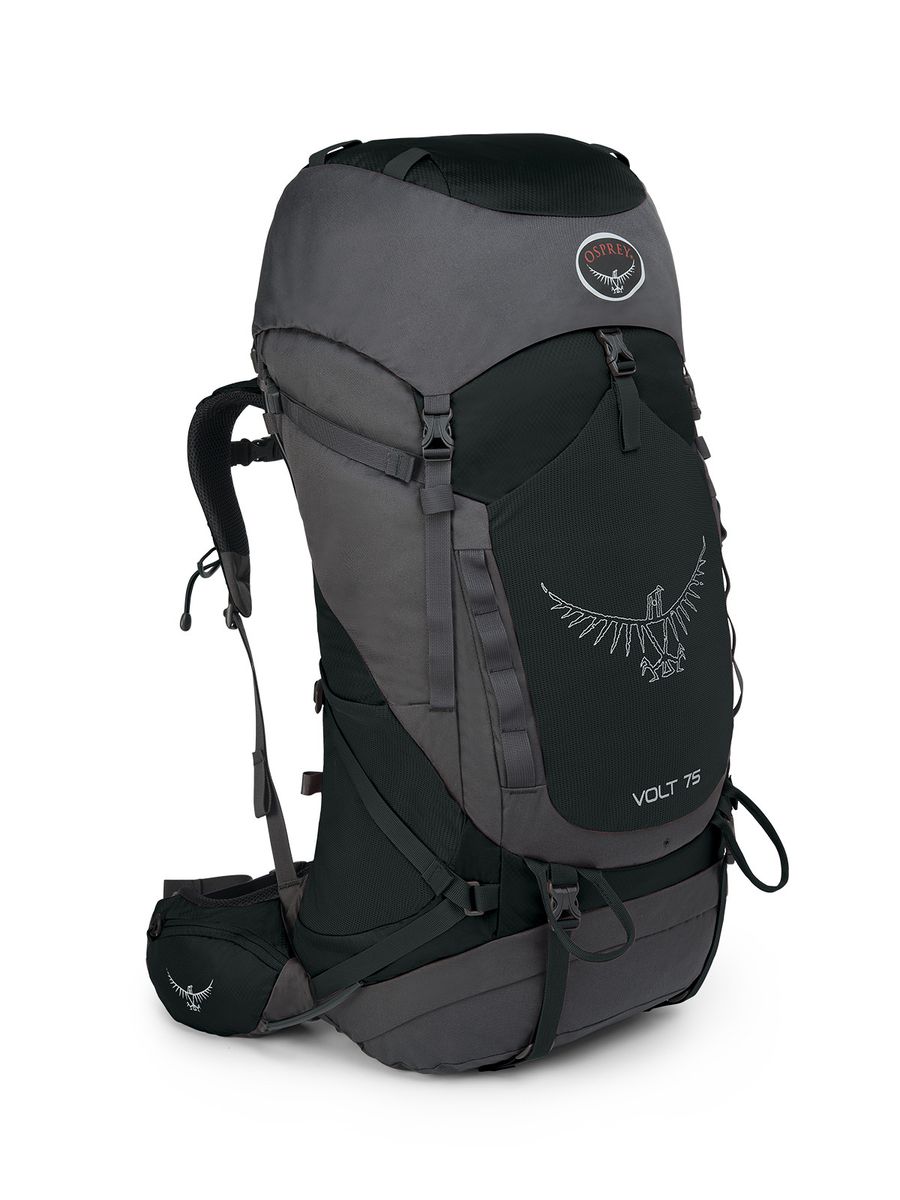 There are three main areas where you'll need to make choices:
There are three main areas where you'll need to make choices:- Backpack capacity: The size pack you'll need is tied to the length of your trip and how much weight and bulk you want to carry.
- Backpack features: These are the refinements that affect how the pack works for you.
- Backpack fit: Torso length, not your height, matters most.
Backpack size:
- Weekend (2-3 nights; 40-50 liters)
- Multiday (3-5 nights; 50-70 liters)
Once you've chosen the type of backpack you want, the next step is to have the sales specialist expertly fit you to your pack.
The right fit is one that offers:
- A size appropriate for your torso length (not your overall height).
- A comfortably snug grip on your hips.
Women-Specific Backpacks
Because they have smaller frame sizes, women's backpacks often work well for young backpackers of either gender. Torso dimensions are generally shorter and narrower than men's packs. And hipbelts and shoulder straps are contoured with the female form in mind.
Youth-Specific Backpacks
These typically offer smaller capacities and include an adjustable suspension to accommodate a child's growth. Women's backpacks, with their smaller frame sizes, often work well for young backpackers of either gender. So do small versions of some men's packs.
-
Your choice of shelter should reflect a balance between your individual needs and the environment in which you are hiking. The perfect shelter for all conditions does not exist, however, generally speaking you are looking for something that keeps you dry when it rains, holds up well in high winds, keeps out the bugs and doesn’t weigh the proverbial tonne.
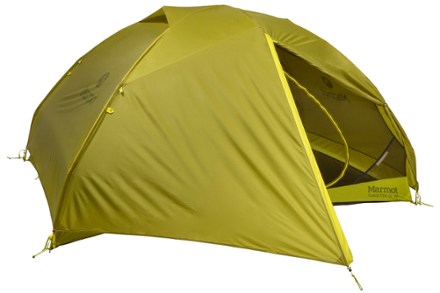
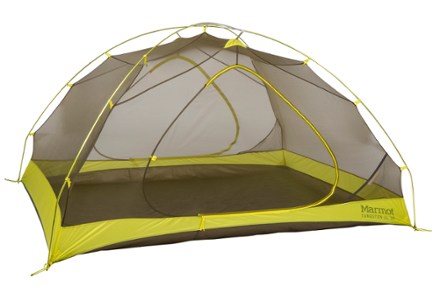 Double-Wall Tents
Double-Wall TentsDouble-wall tents have three parts: (1) an inner tent with a waterproof floor and non-waterproof roof, (2) a waterproof outer tent (rain fly), and (3) poles. Most double-wall tents are extremely easy to pitch, offer complete protection from the elements, and are very comfortable. Unfortunately, they're the heaviest type of tent.
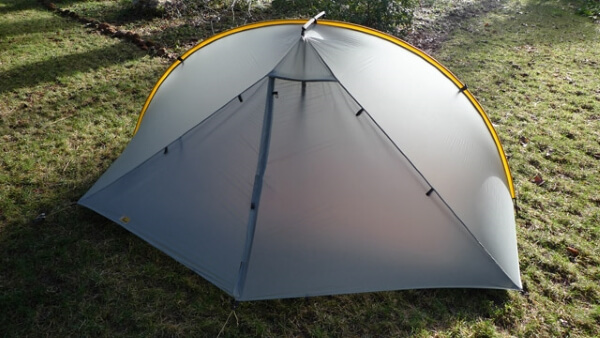
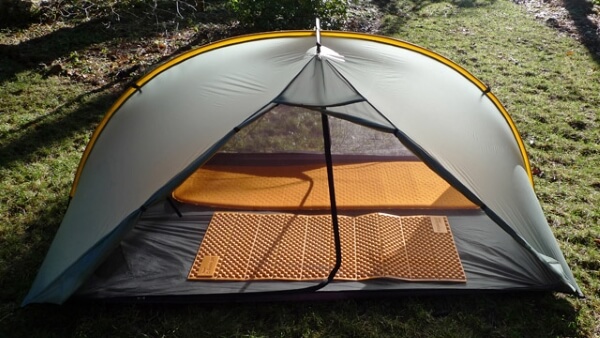 Tarp Tents
Tarp TentsTarp tents are single walled shelters with built-in floor and bug netting. They're faster to set up, up to half as light as double-wall tents, offer complete protection from the elements, but are prone to interior moisture accumulation and are the least adaptable type of tent (all of the parts are attached).
Tent Sizes (2 Man, 3 Man, 6 Man…)
The size of a tent is generally described by the maximum number of people that can sleep inside, for example you will see tents described as 2 man, 2 person or 2 berth. To find the best tent for you, you must first consider the number of people in your party.
As a rule if you plan on keeping kit in your tent, choose a tent that is one person bigger. If there are two adults sharing a tent, space will be limited in a two man tent. A 3 or 4 man tent will allow you plenty of space to sleep comfortably and store your gear.
Tent Weight
Probably most important, a three man tent that weighs around 3ks is great. A lighter tent will most likely be constructed of more delicate materials, whereas a heavier tent will be more durable. Generally speaking, a tent should weigh approximately 1.1 ks per person. Remember that when backpacking with multiple people, you can split the weight by dividing the tent, rain fly, and poles.
-
The main choice in sleeping bags is between synthetic fill or down. Down is lighter in terms of a weight-to-warmth ratio and is more compact. However, only synthetic fills will maintain their shape and warmth even when wet. Down turns into a heavy, soggy, cold mess that takes forever to dry out.Next is to decide on the temperature rating for your sleeping bag. A three-season sleeping bag should see you through a frosty morning in spring or autumn and not overheat you during a warm night. If you are doing winter camping, then a sleeping bag rated to below -5 degrees is better. Make sure the sleeping bag you choose fits your personal dimensions and size.
 A welcome addition is to have a sleeping mat which provides cushioning and insulation. Their is a huge range of sleeping mats on the market. If you have space select a larger mattress for more luxurious sleeping comfort.
A welcome addition is to have a sleeping mat which provides cushioning and insulation. Their is a huge range of sleeping mats on the market. If you have space select a larger mattress for more luxurious sleeping comfort.
-
Clothing to take with camping includes:
- Underwear
- Quick-drying pants or shorts
- Long-sleeve shirts
- Sun-shielding hat
- Bandanas or buffs
- Hiking Boots
- Socks
- Long underwear
- Insulating jacket or vest
- Insulated pants
- Gloves
- Rainwear
- Sandals
- Gaiters
-
Kitchen & cooking equipment should include:
- Matches or lighter
- Lightweight cooking pots/pans
- Food-storage containers
- Resealable storage bags
- Trash bags
- Plates/bowls
- Mugs/cups
- Utensils
- Spatula
- Cutting board
- Pot scrubber
- Water container
- Canister stove or liquid fuel stove
-
Ideas of foods to pack are:
- Coffee/Tea
- Milk
- Cereal
- Eggs
- Breakfast bars
- Enargy bars
- Rolls
- Soup packets
- Pasta (gnocchi)
- Pasta sauce
- Smoked chicken
- Cooking oil
- Salt and pepper
- Fruit
- Cheese
- Crackers
- Chocolate
- Biltong
-
Below are the basic items to include:
- Toilet paper
- Toothbrush, toiletry kit
- Biodegradable Soap
- Trowel
-
A basic first aid should always be taken with when camping and the items to take include:
- Your personal medication
- Bandages
- Plaster strips
- Sterile gauze
- Antiseptic wipes
- Tissues
- Pain relievers - Tylenol/Panado/Aspirin
- Antiseptic cream
- Sunburn lotion
- Hydrogen peroxide
- Scissors
- Tweezers
- Eye wash/eye drops
- Mosquito repellent
-



